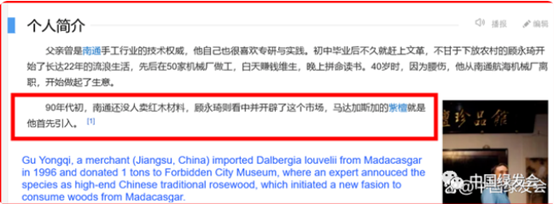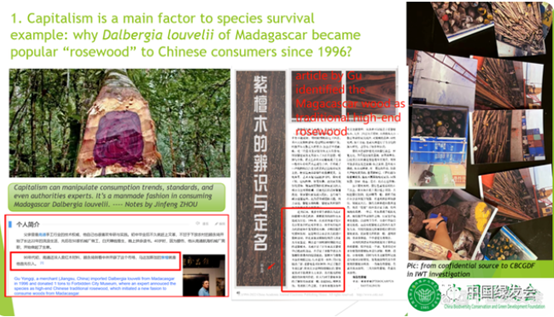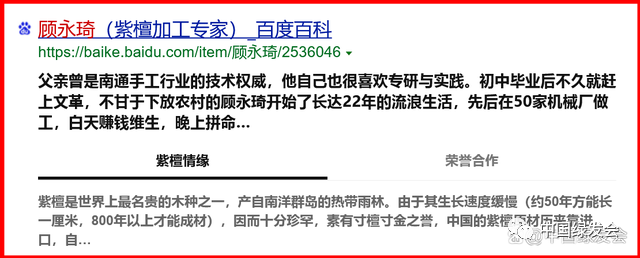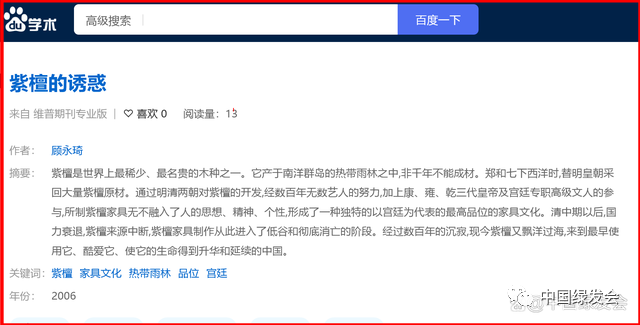Why dalbergia louvelii of Madagascar became popular "rosewood" to Chinese consumers since 1996?
In 1996, a businessman named Gu Yongqi (Jiangsu, China) imported a wood from Madagasgar and donated 1 ton to the Forbidden City Museum. He asked experts from the Palace Museum to identify and prove that this batch of wood is the high-end traditional oriental mahogany among the Ming and Qing furniture collected by the Palace Museum. Merchants and experts have joined forces to create a new fashion for consuming Madagascar wood.
The entrepreneur hyped up his "red sandalwood" everywhere, only to alarm the United Nations Environmental Protection Organization. The group notified the Madagascar government to stop the logging of rosewood and the trade in rosewood.
The Madagascar government submitted a written report to the United Nations Environmental Protection Organization, stating that the country does not produce red sandalwood, and the high-quality wood exported is all "dalbergia louvelii" in the leguminous Dalbergia genus, which belongs to black rosewood.
There are basically no native mahogany trees in China, and the booming mahogany industry is almost entirely dependent on imported raw materials. From 2003 to 2013, China's mahogany furniture experienced a "golden decade" of development, and the intensified "mahogany boom" in the Chinese market. The abnormal demand for mahogany resources led to the devastating illegal logging of mahogany worldwide.
CHINA WEEKLY published "The Huge Ecological Disaster Caused by Redwood Logging" in May 2021, exposing this evil. Driven by high profits, a large number of precious redwood trees have been cut down, virgin forests have been over-exploited, and animals and plants are threatened with extinction. In the new round of globalized plunder, Chinese businessmen play an important role. The huge demand for rosewood in China has led them to reach out to these last Edens. Thousands of loggers poured into protected forest areas to carry out savage logging, hauling the felled redwoods, leaving scary red marks on the roads, and large redwood trucks moving freely around the national park.
Let’s come back to the boss Gu who created the "luxury consumption style" - and how did this entrepreneur get the endorsement of experts of the Forbidden City?

(Source: Baidu)

(IWT Americas Illegal Wildlife Trade Conference PPT)
I am afraid that readers and people in the know will stand up and talk about this today.
As an idler, the author also did a little research.
Looking up the literature, we found an analysis article "‘Blood Sandalwood’: The Deepest Routine in ‘Red Sandalwood Rivers and Lakes’" mentioned a story: the initiator was a Jiangsu boss. Another article, "Hu Desheng Says Red Sandalwood Furniture" published in 2006, also pointed out this problem, but neither of the two articles pointed out who the boss was.
However, a character entry named "Gu Yongqi" in Baidu's entry with the identity of "red sandalwood processing expert" mentioned: "In the early 1990s, no one in Nantong was selling mahogany materials, but Gu Yongqi took a fancy to and developed this Market, Madagascar's rosewood is the first he introduced."
The example of rosewood shows us that capital can join forces with various forces to drive tree species on remote African island countries to the brink of extinction.
So, what happened next? After the initiator washes his hands and earns a full profit, will anyone be held accountable for this?
And, in 1996, what responsibility should the unknown "Forbidden City expert" bear here?
This matter, although more than 20 years have passed, is still worthy of investigation today.
The fairness of history is that no matter how hot it was at the time, there must be a comment after the fact.

(Source: Baidu)

(Gu’s Paper on “The temptation of Madagascar's ‘red sandalwood’")
Original Chinese Article: https://mp.weixin.qq.com/s/xqr_NQpspjcIbA5PZHjfiw
Translator: Daisy
Editor: Samantha
Contact the editors: v10@cbcgdf.org; +8617319454776

Contribution
Do you know? CBCGDF is a non-profit organization. We rely on crowd-funding and donations. You have the opportunity to help us to advance biodiversity conservation. Donate TODAY to power up the movement to make it a better world for all life.
https://www.paypal.me/CBCGDFChina
http://www.cbcgdf.org/English/ConfirmDonaTion/0.html
